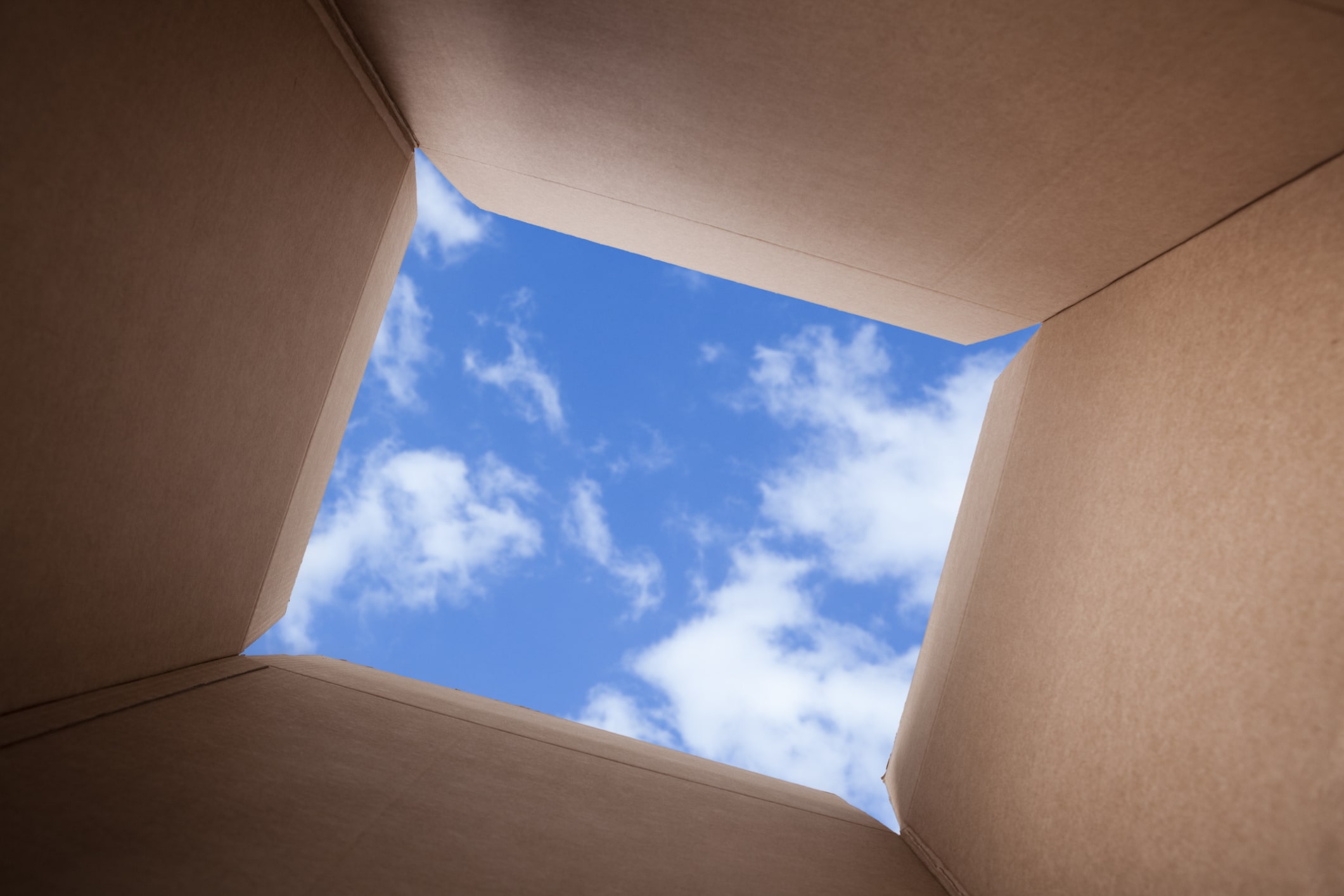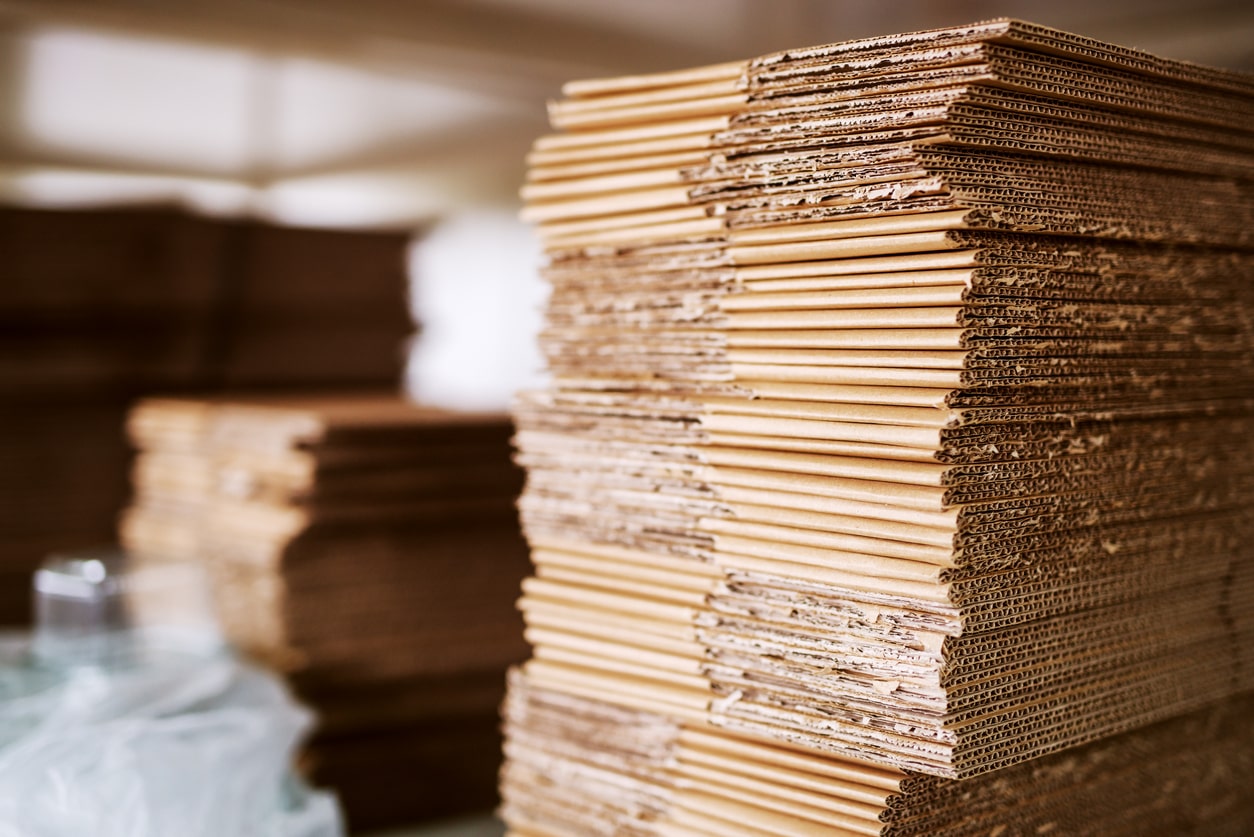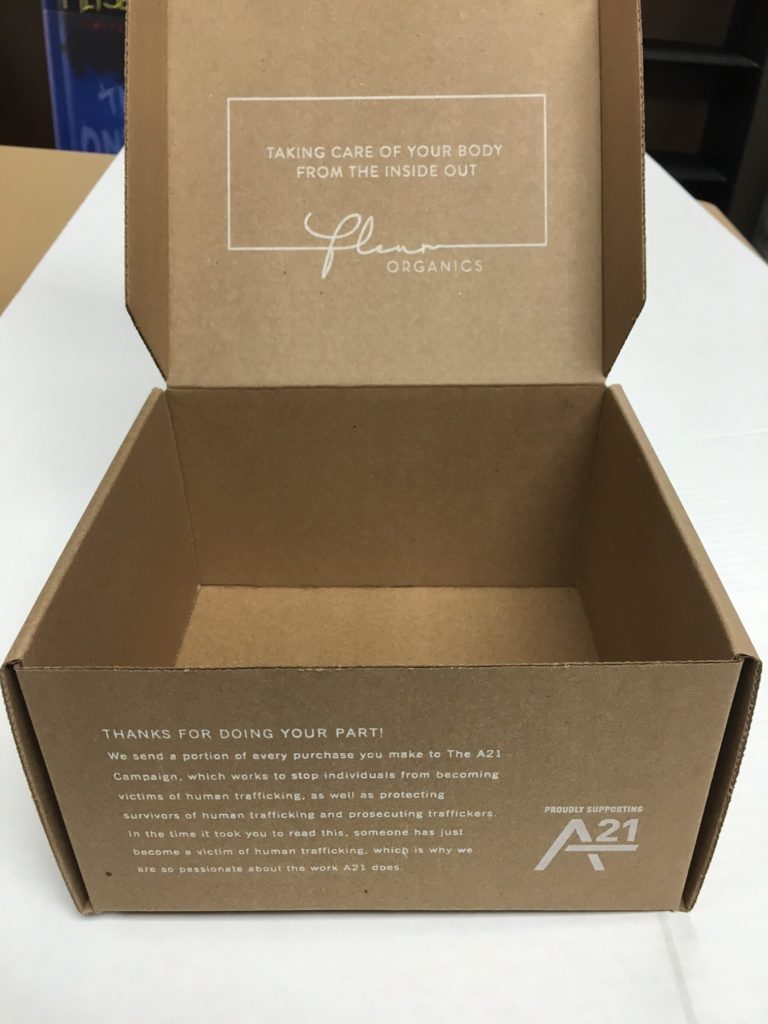When it comes to choosing packaging solutions, businesses must consider the environmental impact of the materials they use. Eco-friendly options are in high demand from consumers and companies alike. With a plethora of options on the market, it can be difficult to know which choice is best. Keeping ethical shopping and sustainability in mind, let’s explore how corrugated cardboard boxes provide the ultimate solution — and what Custom Boxes Now is doing to help.
Choosing corrugated cardboard boxes for your packaging and shipping needs leads to a host of business benefits. Reduced costs, improved product safety and enhanced customization often top the list. But did you know that turning to custom recycled cardboard boxes can make a major environmental difference? Plus, upping your sustainability efforts will leave a positive mark on the planet while improving your brand image and customer experience.
Custom Boxes Now is proud to go green through our emphasis on recycled cardboard materials. Here’s how your business can join us in improving sustainability through corrugated packaging solutions.
Corrugated boxes are primarily made from recycled paper and can be recycled again once they serve their shipping, storage or display purpose. At Custom Boxes Now, corrugated cardboard packaging is 100% recyclable, making it among the greenest packaging solutions available
Choosing recyclable packaging materials contributes to several eco-friendly effects, including:

Corrugated packaging is made from a variety of natural resources, such as wood chips, paper pulp and pine timber. These natural origins ensure that your corrugated cardboard will come from a renewable, sustainable resource instead of leaving a heavy carbon footprint.
Recycling cardboard takes only about 75% of the energy needed to create new cardboard. Custom Boxes Now uses a high percentage of post-consumer waste to construct our boxes, cutting down on the need for new materials.

Opting for custom recycled boxes, whether small or large, ensures you can tailor the size to best fit your product. Transporting products in accurately sized boxes helps cut down on material waste, improving your sustainability efforts over time.
Choosing custom-fit packaging will also help your company reduce its carbon emissions from shipping and transportation. Transporting a larger number of packages in a smaller number of vehicles can lead to vastly more efficient distribution — and an incredible reduction in your carbon footprint.

Our “Green by Design” approach focuses on designing every component of our corrugated boxes in an environmentally responsible manner–from the types and amount of materials used, to the processes employed in production, to the methods of transport and shipping.
Our brown (kraft) corrugated boxes are 60% to 95% post-consumer waste, while white corrugated boxes are 30% to 70% post-consumer waste.
Even better news: the boxes we produce are 100% recyclable. This is a great aspect to promote to your end-customers right on the shipping boxes or in promotional material, so they know to recycle the boxes and that your company is eco-conscious.
SFI® Certification – Custom Boxes Now has earned SFI certification to the independent Sustainable Forestry Initiative chain-of-custody standard.
Our cardboard shipping boxes are all made from recycled materials
White boxes are made from post-consumer waste
Kraft boxes are made from post-consumer waste
All our boxes are 100% recyclable
In today’s business world, going green is no longer a bonus for success — it’s imperative. As the number of ethical shoppers surges, consumers are looking closer than ever at your business model and sustainability practices. Green practices are a key distinction that will set your company apart from the competition and encourage brand loyalty. Beyond improving your business, emphasizing sustainable practices is a vital way to support the planet.
Buying eco-friendly boxes is a simple and effective way to accomplish this goal. No matter your industry, opting for custom recycled boxes can benefit your bottom line, increase your customer loyalty and, most importantly, leave a lasting positive environmental impact.
Are you interested in making a sustainable difference with your businesses’ packaging solutions? Reach out to Custom Boxes Now to discover how we can help create custom eco-friendly boxes to reduce your company’s environmental footprint.
Did you know that 73% of millennial consumers say they’re willing to pay more if it means buying from a brand that’s socially conscious?
If you’ve thought about shifting your brand message to have a more “green” focus, or if you just want to quietly commit to finding more sustainable packaging solutions, the research shows you’re making a smart move.
Not convinced yet? Let’s talk about some of our favorite ideas for creating customized boxes that hop on the trend of social and environmental justice, so you can connect with more markets than ever.

Of course, choosing packaging that’s more eco-friendly and made from recycled materials is a great way to lower your company’s environmental impact. But here at Custom Boxes Now, we’re all about taking good ideas even further.
When you’re considering the materials to make your boxes out of, also make sure that you’re thinking about the functionality of the packaging itself. For example, if you’re a flower shop, can your folding cartons be turned into flowerpots or homes for succulents? If you’re a clothing shop, is there a way that your packaging can be folding into a clothing hanger for your products?
Form and function together isn’t just innovative and cool – it’s also an awesome way to lessen your footprint. Plus, since your ideas are so original, customers are likely to take a picture of them and upload them to their social media accounts. Make sure you’re featuring these snaps on your blogs and Instagram. These days, it’s all about customer engagement!
When it comes to creating ethical products, or simply highlighting the philanthropic side of your business, your packaging is just as important as your products themselves.

That’s why, in addition to considering the form and function of your packaging, you’ll also want to think about what kind of message any text you include is sending.
This can be as simple as printing a few stats about a cause you support on the interior of your box lid. Remember, in packaging, every blank space should be seen as prime real estate – an opportunity to connect with your customers.
You could also hold miniature-essay contests relating to social justice, and then print your favorites, or the winners, on the interior or exterior of your box. When you’re putting texts relating to important causes on your box, think about how this will affect your overall design scheme. Keep in mind, you want the text and your message to be the central focus, so consider using earth tones and minimalist design everywhere else.
If the cause you’re supporting has a well-known symbol, feel free to stamp that on your box as well!
Remember to always include your brand’s social media handles on your packaging, so that customers know where to find you in cyberspace. Plus, they’ll likely want to learn more about how you’re working with the causes represented on your packaging.
Whether philanthropy has long been a part of your company history, or if you’re just in the process of researching causes for your company to support, getting your packaging to show who you are as a brand is incredibly important.
To get started on creating ethical packaging, get in touch with a member of our team. We’re ready to help you help the world!